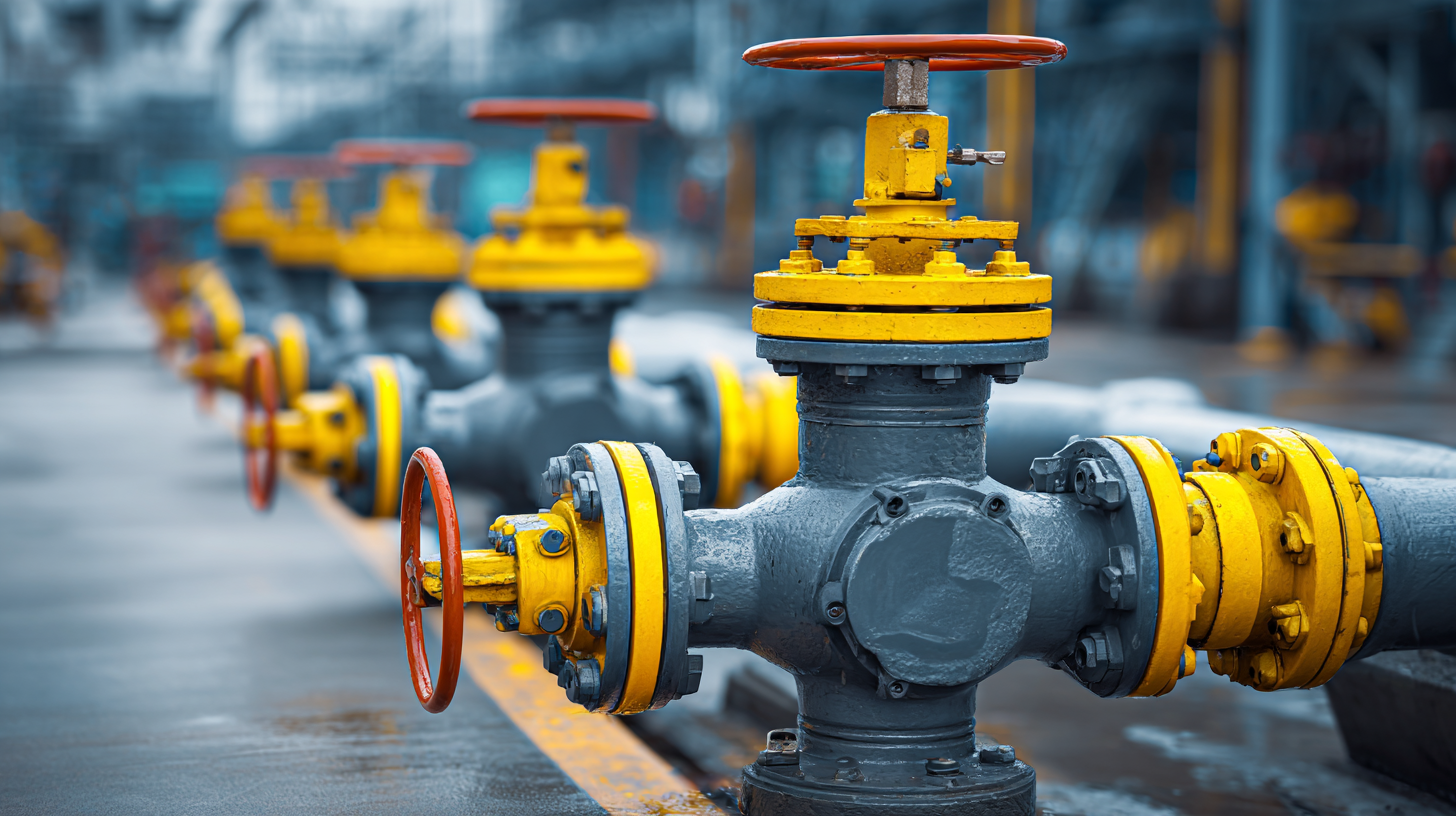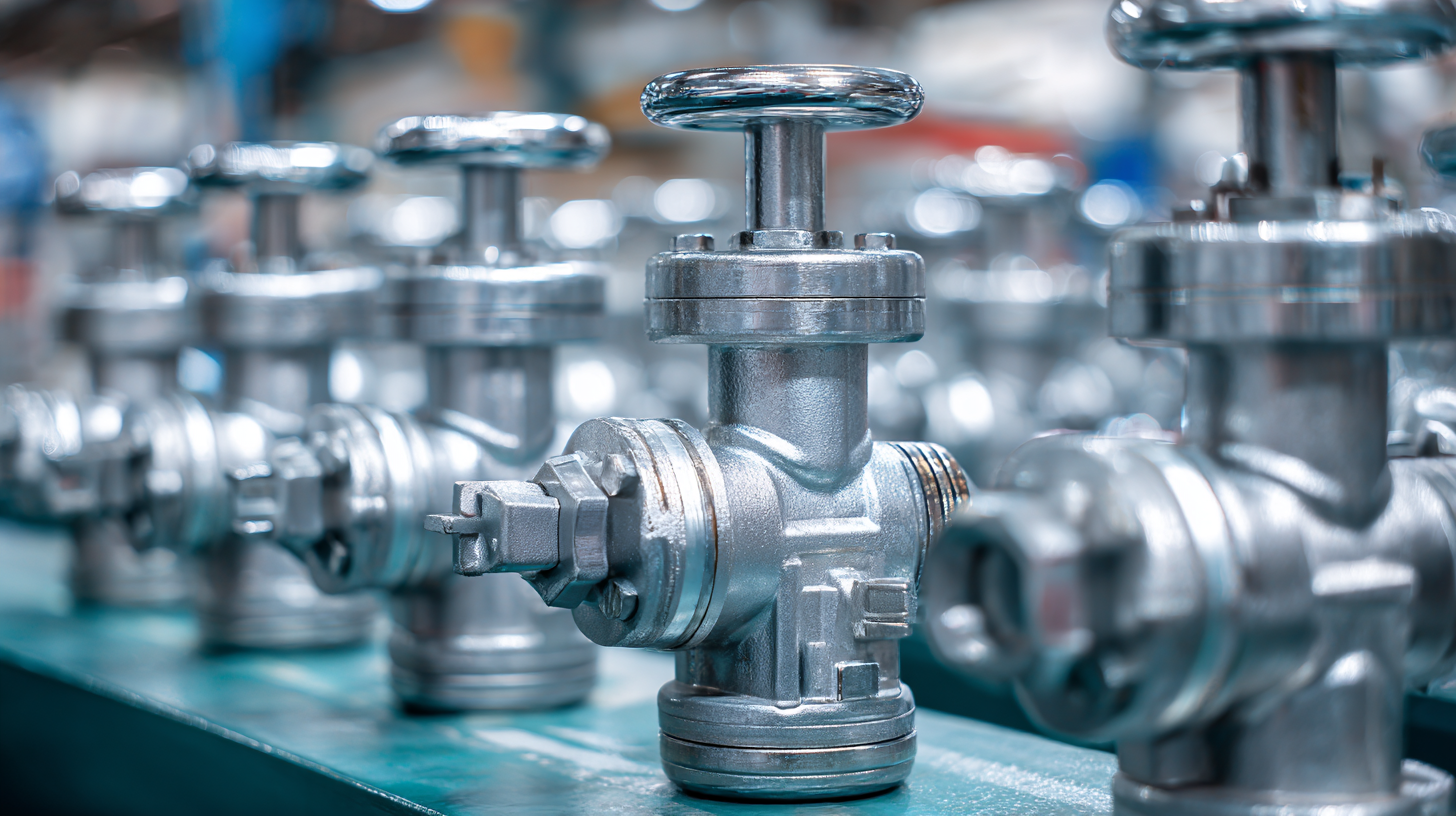
In today's interconnected global economy, ensuring compliance with import-export certifications for critical components like globe valves is essential for manufacturers aiming to compete on the world stage. The global valve market is projected to reach approximately $20 billion by 2025, with a significant portion attributed to the rising demand for high-quality globe valves across various industries, including oil and gas, water treatment, and power generation.

As manufacturers in China strive to meet international standards, adherence to certifications such as ISO 9001 and CE markings becomes pivotal in establishing trust and reliability. Reports indicate that nearly 70% of customers prioritize certified products when making purchasing decisions, highlighting the necessity for manufacturers to integrate compliance into their operational strategies. By aligning their production processes with global certification requirements, China-based manufacturers can ensure that their globe valves are recognized for excellence in quality and performance, ultimately contributing to the mantra of "中国制造,全球共享,品质值得信赖."
Navigating the global import-export certification landscape for globe valves is crucial for manufacturers aiming to maintain competitiveness and compliance. According to a report by MarketsandMarkets, the global industrial valves market, including globe valves, is expected to grow from USD 63.4 billion in 2020 to USD 88.8 billion by 2025, highlighting the importance of adherence to international standards. Each region often has distinct certification requirements, such as the American Society of Mechanical Engineers (ASME) standards in the United States and the European Pressure Equipment Directive (PED) in Europe.
Understanding these certification requirements is essential, as failing to meet them can result in costly delays and fines. The International Organization for Standardization (ISO) outlines various standards that apply to globe valves, including ISO 9001 for quality management systems and ISO 14001 for environmental management. Compliance with these standards not only facilitates smoother trade but also ensures that products meet safety and performance criteria expected by global markets. As more countries tighten regulations to enhance safety and quality, the ability to demonstrate compliance through certifications has become a vital component of successful international trade operations for globe valve manufacturers.
| Certification Type | Region | Issuing Authority | Compliance Requirements | Documentation Needed |
|---|---|---|---|---|
| ISO 9001 | Global | International Organization for Standardization | Quality Management System | Quality Manual, Audit Reports |
| CE Marking | European Union | European Commission | Product Safety and Performance | Technical File, Declaration of Conformity |
| API 600 | United States | American Petroleum Institute | Valve Design and Testing Standards | Inspection Certificates, Test Reports |
| ASME B16.34 | United States | American Society of Mechanical Engineers | Valves for Use in Pipeline Systems | Design Calculations, Materials Certificates |
| JIS B 2003 | Japan | Japanese Industrial Standards Committee | General Requirements for Valves | Test Procedures, Certification Documents |
When it comes to importing and exporting globe valves, understanding the key certifications is paramount for compliance and market access. Several international standards, such as ISO 9001, ASME, and API certifications, are essential for manufacturers to demonstrate their product's quality and safety. These certifications not only help in meeting regulatory requirements but also establish a brand's credibility in the global market, aiding in building trust with clients and stakeholders.

As the market evolves, particularly in specialized sectors like cryogenic valve assemblies, the importance of certifications becomes even more pronounced. The cryogenic valve assembly market is expected to significantly grow, reaching USD 7.21 billion by 2029, reflecting an 8.3% CAGR. This growth underscores the necessity for stakeholders to ensure their products comply with the latest regulations and certifications to maintain competitiveness. Understanding these requirements and staying updated with changes in certification standards will be crucial for manufacturers aiming to thrive in this dynamic and expanding market.
Preparing globe valves for compliance testing is essential for meeting global import-export certifications. The process begins with thorough documentation of valve specifications, including materials used and manufacturing processes. According to a report by the International Valve Manufacturers Association, over 30% of compliance failures stem from inadequate documentation. Ensure that all specifications are complete, accurate, and readily accessible for audit purposes.
Tip: Regularly update your documentation as new manufacturing techniques or materials are adopted. Staying proactive helps mitigate compliance issues and improves overall efficiency in meeting regulatory standards.
Next, conducting routine quality control checks during production can catch potential compliance issues before they escalate. A study by Market Research Future highlights that 65% of quality assurance practices significantly reduce the risk of non-compliance. Implementing standardized testing procedures and training staff on compliance requirements can enhance product reliability and facilitate smoother testing processes.
Tip: Engage a third-party testing service to validate the functionalities of your globe valves. This external perspective can provide deeper insights and ensure your products meet both local and international standards effectively.
Achieving compliance with global import-export certifications for globe valves presents significant challenges that require careful navigation. One of the primary hurdles is understanding the complex regulatory landscape, which varies widely by region. According to recent industry reports, 62% of companies fail to meet compliance requirements due to a lack of updated knowledge on regulations. This underscores the necessity for organizations to invest in continuous education and training for their staff to stay abreast of the evolving compliance requirements.
Another common issue is the integration of compliance processes into existing operational frameworks. Many businesses struggle with siloed departments that inhibit effective communication about compliance strategies. Data suggests that companies employing AI-driven tools have seen a 30% improvement in compliance efficiency by automating routine compliance tasks and improving data accuracy. Additionally, organizations must prioritize building a robust data protection strategy to safeguard sensitive information, especially as they expand globally. Engaging with integrated solutions not only facilitates adherence to regulations but also enhances overall operational integrity.
Maintaining compliance in global trading is crucial for companies involved in the import-export of best globe valves. Adhering to international certification standards not only ensures legal compliance but also enhances brand reputation and customer trust. To achieve this, businesses should stay informed about the evolving regulations in the markets they operate in.
One effective tip is to establish a robust compliance management system that includes regular audits and training sessions for employees. This will aid in identifying gaps in compliance and provide the necessary knowledge to navigate complex regulations. Additionally, partnering with experienced legal and trade experts can provide valuable insights into maintaining compliance with international standards.
Another best practice is to conduct thorough research on the specific certifications required for different regions. Different countries may have unique requirements, and being aware of these nuances can prevent costly delays and penalties. Utilizing trade compliance software can also streamline this process by keeping track of documentation and deadlines essential for compliance. By implementing these strategies, businesses can sustain continuous global trading while minimizing risks related to non-compliance.
